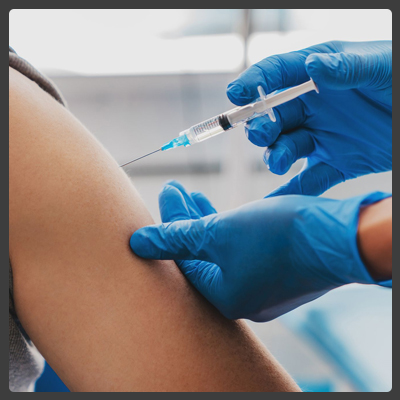

Tetanus is an acute infectious disease caused by the toxins of the tetanus bacillus. it is characterized by prolonged tonic spasm of certain muscles, particularly the muscles of the jaw and neck.

Signs and symptoms of tetanus appear anytime from a few days to several weeks after tetanus bacteria enter your body through a wound. The average incubation period is seven to 10 days.
Common signs and symptoms of tetanus include:
Possible other signs and symptoms include:
Tetanus is caused by a toxin made by spores of bacteria, Clostridium tetani, found in soil, dust and animal feces. When the spores enter a deep flesh wound, they grow into bacteria that can produce a powerful toxin, tetanospasmin. The toxin impairs the nerves that control your muscles (motor neurons). The toxin can cause muscle stiffness and spasms — the major signs and symptoms of tetanus.
Nearly all cases of tetanus occur in people who have never been vaccinated or in adults who haven't kept up with their 10-year booster shots. You can't catch tetanus from a person who has it.
Tetanus cases have developed from the following:
Once tetanus toxin has bonded to your nerve endings it is impossible to remove. Complete recovery from a tetanus infection requires new nerve endings to grow, which can take up to several months.
Complications of tetanus infection may include:
You can easily prevent tetanus by being vaccinated.
The tetanus vaccine usually is given to children as part of the diphtheria and tetanus toxoids and acellular pertussis (DTaP) vaccine. This vaccination provides protection against three diseases: a throat and respiratory infection (diphtheria), whooping cough (pertussis) and tetanus.
The DTaP vaccine is a series of five shots, typically given in the arm or thigh to children at ages:
A booster of the tetanus vaccine is typically given in combination with a booster of diphtheria vaccine (Td). In 2005, a tetanus, diphtheria and pertussis (Tdap) vaccine was approved for use in teens and adults under age 65 to ensure continuing protection against pertussis, too.
It's recommended that adolescents get a dose of Tdap, preferably between the ages of 11 and 12, and a Td booster every 10 years thereafter. If you've never received a dose of Tdap, substitute it for your next Td booster dose and then continue with Td boosters.
If you're traveling internationally, particularly to a developing country where tetanus might be common, make sure your immunity is current.
To stay up to date with all of your vaccinations, ask your doctor to review your vaccination status regularly.
If you weren't vaccinated against tetanus as a child, see your doctor about getting the Tdap vaccinez
Ledum pal – tetanus with twitching of muscles near the wound; indicate din punctured wounds produced by sharp pointed instruments.
Hydrocyanicum acid –This is a homeopathic remedy which is very homeopathic to tetanus. It produces a persistent tonic spasm from its direct action on the spinal cord. It shows itself in the muscles of the face, jaws and back. There is trismus or locked jaw, risus sardonicus and impeded respiration, with lividity and frothing at the mouth; the rigidity is firm, the body is bent backwards, the attack is sudden, and there is less reflex excitability than with the Strychnia case.
Angustura produces a tetanic rigidity of the muscles, a painful stiffness and stretching of the limbs. The lips are drawn back showing the teeth and the jaws are locked.
Cicuta virosa –The action on the nervous system, producing spasmodic affections, viz, hiccough, trismus, tetanus, and convulsions, give the pathological picture calling especially for this remedy, whenever this is further characterized, by the more individual symptoms of the drug. Among these, are the bending of the head, neck, and spine backwards, and the general action of the patient is violent, with frightful distortions. Violent, strange desires. Sensation of internal chill. Moaning and howling. useful in tetanic convulsions with sudden rigidity and jerking followed by prostration; the characteristic symptoms are the bending of the head, neck and spine backwards. Intense oppression of breathing, lockjaw and the patient becomes violent with frightful distortions.
Nux Vomica – The leading homeopathic remedy for tetanus. It has tetanic convulsions with opisthotonos, distortion of eyes and face, with dyspnoea excited by any external impression. Strychnia, the alkaloid of Nux-vomica, produces a perfect picture of tetanus, with its convulsion of muscles renewed by the slightest external impression, its “risus sardonicus,” its respiratory spasm, with blue 'cyanosed face and clear mind. The value of Strychnia in tetanus is recognized by Trousseau and Stille, and it is a striking example of Homoeopathy as sometimes practiced by allopaths.
Ignatia suits emotional trismus or opisthotonos.